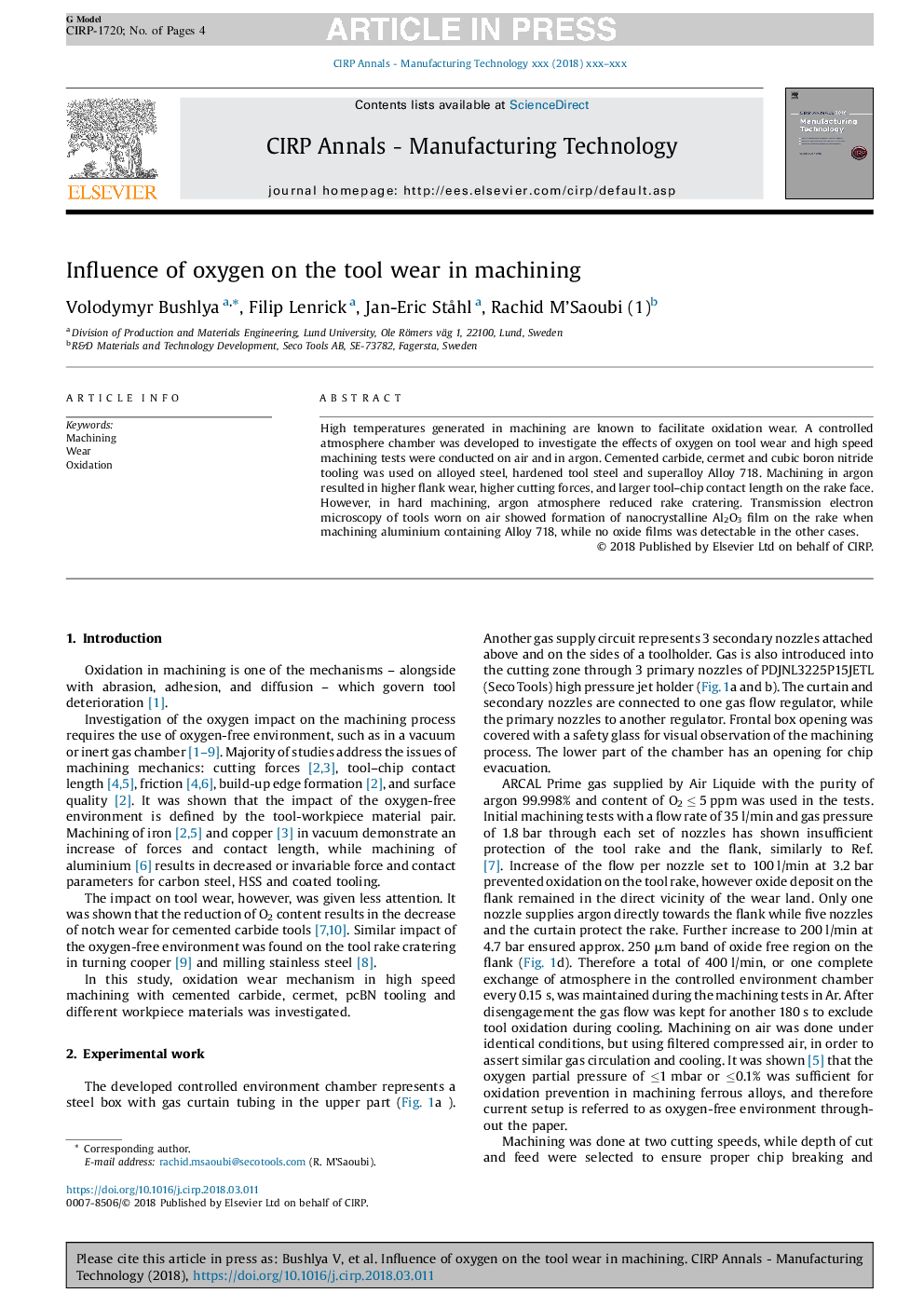| Article ID | Journal | Published Year | Pages | File Type |
|---|---|---|---|---|
| 8038635 | CIRP Annals - Manufacturing Technology | 2018 | 4 Pages |
Abstract
High temperatures generated in machining are known to facilitate oxidation wear. A controlled atmosphere chamber was developed to investigate the effects of oxygen on tool wear and high speed machining tests were conducted on air and in argon. Cemented carbide, cermet and cubic boron nitride tooling was used on alloyed steel, hardened tool steel and superalloy Alloy 718. Machining in argon resulted in higher flank wear, higher cutting forces, and larger tool-chip contact length on the rake face. However, in hard machining, argon atmosphere reduced rake cratering. Transmission electron microscopy of tools worn on air showed formation of nanocrystalline Al2O3 film on the rake when machining aluminium containing Alloy 718, while no oxide films was detectable in the other cases.
Related Topics
Physical Sciences and Engineering
Engineering
Industrial and Manufacturing Engineering
Authors
Volodymyr Bushlya, Filip Lenrick, Jan-Eric Ståhl, Rachid M'Saoubi,
